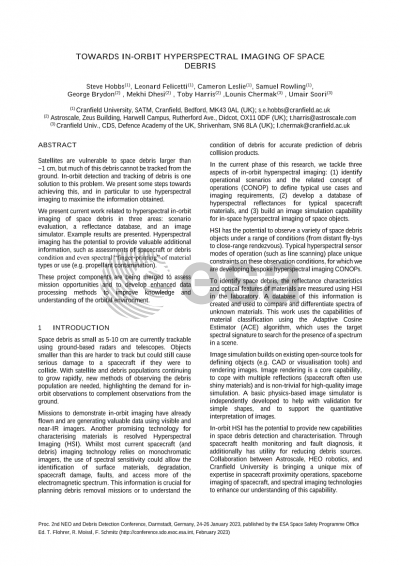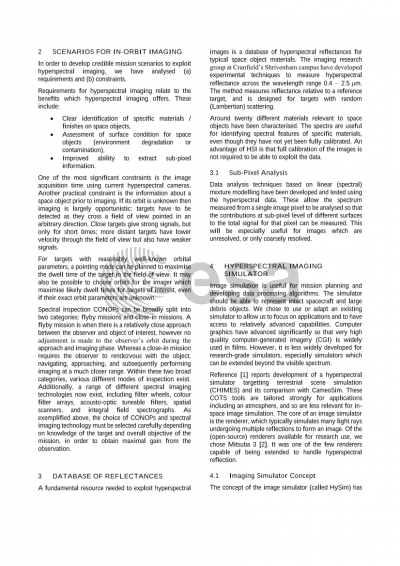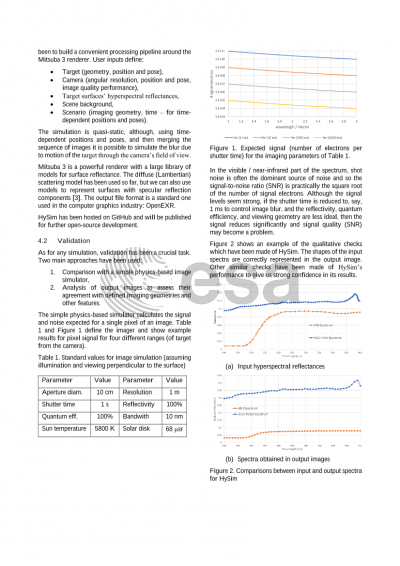Document details

Abstract
Space debris as small as 5-10 cm are currently trackable using ground-based radars and telescopes. Objects smaller than this are harder to track but could still cause serious damage to a spacecraft if they were to collide. With satellite and debris populations continuing to grow rapidly, new methods of observing the debris population are needed, highlighting the demand for in-orbit observations to complement observations from the ground.
Missions to demonstrate in-orbit imaging have already flown and are generating valuable data using visible and near-IR imagers. Another promising technology for characterising materials is resolved Hyperspectral Imaging (HSI).
Whilst most current spacecraft (and debris) imaging technology relies on monochromatic imagers, the use of spectral sensitivity could allow the identification of surface materials, degradation, spacecraft damage, faults, and improve illumination conditions. This information is crucial for planning debris removal missions or to understand the condition of debris for accurate prediction of debris collision products.
In the current phase of this research, we tackle three aspects of in-orbit hyperspectral imaging: (1) identify operational scenarios and the related concept of operations (CONOP) to define typical use cases and imaging requirements, (2) develop a database of hyperspectral reflectances for typical spacecraft materials, and (3) build an image simulation capability for in-space hyperspectral imaging of space objects.
HSI has the potential to observe a variety of space debris objects under a range of conditions (from distant fly-bys to close-range rendezvous). Typical hyperspectral sensor modes of operation (such as line scanning) place unique constraints on these observation conditions, for which we are developing bespoke hyperspectral imaging CONOPs.
To identify space debris, the reflectance characteristics and optical features of materials are measured using HSI in the laboratory. A database of this information is created and used to compare and differentiate spectra of unknown materials. This work uses the capabilities of material classification using the Adaptive Cosine Estimator (ACE) algorithm, which uses the target spectral signature to search for the presence of a spectrum in a scene.
Image simulation builds on existing open-source tools for defining objects (e.g. CAD or visualisation tools) and rendering images. Image rendering is a core capability, to cope with multiple reflections (spacecraft often use shiny materials) and is non-trivial for high-quality image simulation. A basic physics-based image simulator is independently developed to help with validation for simple shapes, and to support the quantitative interpretation of images.
In-orbit HSI has the potential to provide new capabilities in space debris detection and characterisation. Through spacecraft health monitoring and fault diagnosis, it additionally has utility for reducing debris sources. Collaboration between Astroscale, HEO robotics, and Cranfield University is bringing a unique mix of expertise in spacecraft proximity operations, spaceborne imaging of spacecraft, and spectral imaging technologies to enhance our understanding of this capability.
Preview





